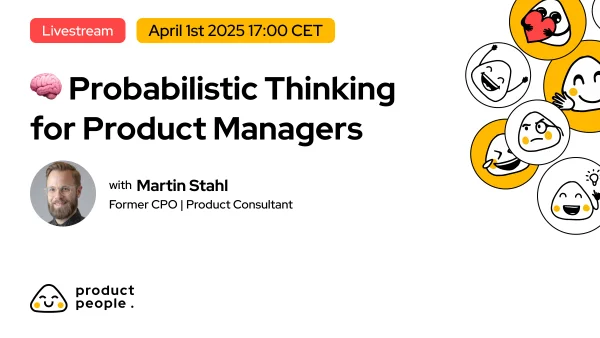Dealing with high uncertainty, low-quality data, and intransparent decision-making? Thinking in bets and scenarios is a helpful competence that we want to discuss here. We’re looking into ways to assess risks and understanding human biases.

Re-watch talk incl. discussion on LinkedIn. Video also available on PeerTube.
Summary of the talk
Situation
Situation for most of us in digital businesses:
- We make hundreds of decisions every day.
- Limited data for solution, effort, customer and market behavior. – Complex stakeholder environment which influence decisions and prioritisations.
- Fast-paced environment with not much time to reflect. – Packed backlogs and even more great ideas by somebody.
Sounds familiar?
Most of our daily problems and challenges lead to many possible scenarios and outcomes. Nevertheless, we’re expected to have this one right and perfect solution. Unfortunatly there’s no 1:1 relationship from problem to solution, no matter how experienced and senior one might be.
We need to come to a more elaborated understanding of decision-making: decision-making as a bet with an array of uncertain outcomes (rather than a fixed result).
This talks looks into poker, inspired by Annie Duke’s book “Thinking in Bets”: “Poker players have to make multiple decisions with significant financial consequences in a compressed time frame.” (Duke, A., 2018, S. 18). This could be also a great definition for Product Management, right? Let’s move on to a decision-making, which takes the high amount of uncertainy in account:
Probabilistic thinking
Probabilistic thinking is a method that takes uncertainties into account and makes decisions on the basis of probabilities. Good decisions = It is the result of a solid decision making process plus representation of the current state of knowledge, assumptions and hypotheses, plus having an exit rule.
Beware of biases when it comes to assess scenarios! Overconfidence bias, hindsight bias, availability bias, etc.
Working with scenarios
Thinking about what will probably happen. Create future scenarios. Make it part of the equation: Probability, risk, assumption, belief, choice, effort,..
Create scenarios:
- Working backwards (Future II): identify positive / best outcome and work backwards
- Pre-mortem: identify negative outcome and work backwards to understand options which would lead there.
- Brain storm scenarios (not recommended)
Once you created an array of scenarios:
- Estimate the probability of each scenario based on available data.
- Proritize the scenarios (e.g. calculate the expected value of each option (EV = probability × outcome)
- Update your estimates frequently with new information (Bayesian learning)
The Exit criteria The exit rule needs to be implemented before the start of the experiment or project. It prevents the sunk cost fallacy to kick in, implying that once you’re working on the solution, you’ll not be rational enough to quit.
Daily applications
- Data-driven decision making with A/B-Testing, (qualitative) user interviews, data analytics,.. – Scenario Planning and simulations with Decision trees, Causal Loop diagrams – Risk Mitigation Frameworks
- Work with probabilities in Stakeholder Communication – Fail fast, fail smart -> Retrospectives, Learning loops